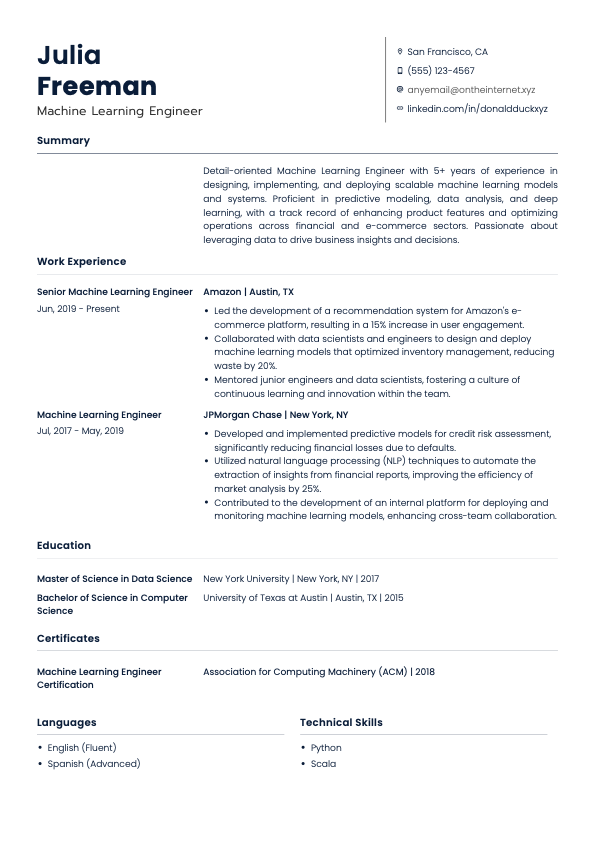
Machine learning engineering is a highly coveted skill set expected to continue to be in high demand in the upcoming years. Here’s how you can structure your resume and highlight your skills and achievements to be seen as a potential Machine Learning Engineer by employers.

"Dynamic Machine Learning Engineer with over 5 years of experience specializing in creating and implementing machine learning models, data architecture, and AI solutions. Proficient in transforming business requirements into AI-driven solutions to promote growth and operational efficiency. Demonstrated history of building robust AI systems leading to significant improvements in data processing and task automatisation."
Tips for Writing a Strong Resume Summary
Keep it brief: Aim for 3-4 sentences, ideally between 50 – 100 words.
Focus on your most relevant experiences and achievements.
Incorporate keywords from the job description to align with the employer’s expectations.
- Built a predictive model that increased data processing speed by 30%, resulting in faster decision-making.
- Utilized machine learning frameworks to enhance data management, decreasing data redundancy by 35%.
- Spearheaded an AI project that ameliorated data accessibility, boosting team productivity by 50%.
Best Practices for Experience Section
Use reverse chronological order, starting with your most recent role.
Include company names, job titles, and dates of employment.
Emphasize accomplishments that align with the job responsibilities.
Technical Skills
Soft Skills
Tips for Skills Section
Use bullet points for clarity and readability.
Tailor your skills to match the job description.
Prioritize the most relevant skills for this role
Tips for Including Courses and Certifications
Creating a professional resume doesn’t have to be daunting. With the right guidance and tools, you can craft a resume that captures your strengths and impresses hiring managers. Use the Careerpilot resume builder and explore our suggested resume templates to get started. With our intuitive platform, you’ll have a polished and customized resume in no time. Start building your resume today and take the first step toward your next career opportunity!
We use cookies to enhance your experience. By continuing to visit this site, you agree to our use of cookies. Not consenting or withdrawing consent, may adversely affect certain features and functions.